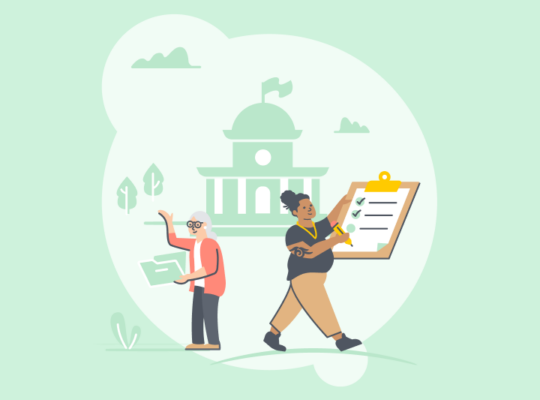Tax Planning 101: Maximize Savings and Minimize Tax With These 9 Strategies
TurboTax Canada
November 21, 2023 | 5 Min Read
Updated for tax year 2025

Whether you’re just starting out and new to filing your taxes or retired and know all the ins and outs, figuring out how to protect your money—or get more back—never gets old. After all, there’s no better feeling than saving as much money as possible at tax time by maximizing your return. Having the right financial tools and strategies in place can make all the difference.
The key is using tax credits, tax deductions, and certain savings tools to keep more of your hard-earned money. Read on for 9 top Canadian tax-saving strategies to help you lower your tax bill.
Key Takeaways
- Financial tools like RRSPs, TFSAs, FHSAs, and RESPs can significantly reduce your tax bill.
- The First-Time Home Buyers’ Tax Credit (HBTC) gives you a $10,000 credit when buying your first property.
- Income splitting with a spousal RRSP can reduce your taxes in retirement.
1. Reduce your taxable income with RRSPs
A Registered Retirement Savings Plan (RRSP) is an excellent way to reduce your taxable income and save for retirement. By saving money in an RRSP account, you defer that portion of your income from taxes as you’re only taxed on what's left after RRSP deductions. For example, if you earn $60,000 a year and contribute $5,000 to your RRSP, you’ll be taxed based on $55,000, not $60,000.
What's more, you only pay income tax on the investment and the income it earns when you make withdrawals from your RRSP. Ideally, you’ll make these withdrawals when you retire and are more likely to be in a lower income tax bracket.
2. Open a Tax-Free Savings Account (TFSA) or a First-Home Savings Account
These types of accounts are win-win investment vehicles. The reason is that investments you hold in a Tax-Free Savings Account (TFSA), such as GICs, mutual funds, stocks, or bonds, let you earn interest, dividends, or capital gains without a tax hit when you withdraw. Anyone over 18 (or, in some provinces, 19) with a valid Social Insurance Number (SIN) can open a TFSA.
For 2026, the annual contribution limit for a TFSA is $7,000, but you may be able to increase that sum if you haven’t taken advantage of TFSA contributions in previous years.
If you're planning to buy your first home, the First Home Savings Account (FHSA) is designed to help you save money tax free. Contributions are tax deductible, and any growth within the account remains tax free if used for a qualifying home purchase. You can put up to $8,000 per year into an FHSA, to a lifetime maximum of $40,000.
With generous lifetime contribution limits, the FHSA offers a combination of tax advantages similar to both the RRSP and TFSA. Those with dreams of home ownership may find an FHSA worth it, as it allows you to grow your money tax free for up to 15 years.
Ask a TurboTax expert or visit the Canada Revenue Agency (CRA) website under My Account, to see how much room you have in your TFSA or FHSA accounts.
3. Claim the First-Time Home Buyers’ Tax Credit
If you and your spouse (or common-law partner) decide to take the plunge and buy your first property, you can claim the First-Time Home Buyers' Tax Credit (HBTC). How it works is you can claim an amount of $10,000 on your tax return during the year you purchase your home. The maximum tax credit that you can receive is $1,500. That’s not a bad housewarming gift.
To qualify for this tax break, you or your significant other can’t have lived in a previous home owned by either of you in the past 4 years.
4. Split income with your spouse
Sharing or splitting pension income with your spouse lowers your income and increases theirs. The idea is for one of you to reduce your tax liability without overly increasing your spouse’s to save on taxes together. Using TurboTax Full Service can help to optimize this calculation for you.
It's important to note that not all pension income qualifies, specifically government pensions such as the Canada Pension Plan (CPP) and the Quebec Pension Plan (QPP) benefits. Find out here if you qualify to split your pension income.
5. Take advantage of employer pension matching programs
If your employer offers a pension program, these are essentially free retirement funds.
Plans that offer you a pre-tax contribution option will deduct your retirement contributions from your gross pay, and then calculate taxes to withhold from your remaining pay after the contribution (instead of calculating the taxes to withhold from your gross pay, then making an after-tax contribution).
For example, if you live in Quebec and earn $50,000 per year and contribute $100 every 2 weeks to your retirement plan, that $100 would save you $32.33 in taxes. This means it will only cost you $67.67 to invest $100. These up-front tax savings can help you reach your investment goals faster.
This doesn’t include the possible employer portion, which is pension funds set aside for you by your boss. This employee benefit can help you reach your savings goals even faster.
6. Invest in real estate
It’s no secret that real estate can be a great way to amass wealth. What’s also good is that when you sell your primary residence (not an investment property), the capital gains you make are tax-free. As long as you live in the space, without using it for any rental purposes, the profit is yours. So, if you buy a condo for $500,000 and sell it for $800,000, the $300,000 difference is yours to keep tax-free.
Capital gains aside, if you invest in a rental property, you can save taxes on the rental income you earn by deducting related expenses. You can lower your rental income even further by taking the Capital Cost Allowance (CCA) deduction, which allows you to claim your building or other assets or additions that lose value over time from wear and tear, breakdowns, and general use. This creates an expense to offset your rental income, and you can get back some of that value through a CCA. This excludes land, however, which isn’t depreciable.
7. Look into government reimbursements for eco-friendly upgrades
The Canada Greener Homes Initiative offers programs that support Canadians in improving energy efficiency in their homes while reducing costs. One in particular, the Canada Greener Homes Loan, offers interest-free loans of up to $40,000 to help homeowners pay for upgrades. Eligible projects include installing solar panels, replacing windows and doors with high-efficiency versions, and improving insulation. The loan also supports switching from fossil fuel-based systems to clean energy alternatives like heat pumps.
The Roulez vert program in Quebec is a nontaxable subsidy that offers a rebate towards the purchase of all-electric vehicles with an MSRP of less than $65,000. This program will continue through the end of 2026.
8. Invest in your child’s future with an RESP
If you’re a parent, investing in your children’s post-secondary education with a Registered Education Savings Plan (RESP) is good math because you don’t have to pay taxes on the money you put into this investment vehicle. These investments grow tax free until the money is withdrawn by the plan’s beneficiary—your child—to fund their post-secondary years.
The federal government chips in with the Canada Education Savings Grant (CESG). The maximum yearly CESG based on your income and contributions can range from $600 to a lifetime maximum of $7,200.
For example, contributing $2,500 to your child’s RESP each year will grant them an additional 20% or $500 per year from the government, until the total reaches $7,200. After 15 years, you’ll have contributed $37,500, added to the government contribution of $7,200, which comes out to $44,700 in savings before interest.
9. Reinvest dividends, tax refunds, or savings to make the most of your dollars
Imagine paying yourself first before any of your bills when you get your paycheque. This is what reinvestment is like.
You may receive monthly dividends, which are taxable, and there’s no way around that. However, if you reinvest the dividends back into the fund every month, you can increase your overall investment. This means your portfolio will grow in value, and future distributions will likely be higher.
Intentionally pay less in income tax
No matter what life stage you’re in or how you choose to invest your money, you don’t have to be in the top 1% to save on your taxes.
By incorporating tax-saving strategies and being intentional with your tax planning, the extra effort you put in today can help you feel more confident and empowered about your financial future.
Finding tax benefits and deductions doesn't have to be complex.
Let TurboTax help you lower your income tax and boost your refund.
1. Reduce your taxable income with RRSPs
2. Open a Tax-Free Savings Account (TFSA) or a First-Home Savings Account
3. Claim the First-Time Home Buyers’ Tax Credit
4. Split income with your spouse
5. Take advantage of employer pension matching programs
7. Look into government reimbursements for eco-friendly upgrades
8. Invest in your child’s future with an RESP
9. Reinvest dividends, tax refunds, or savings to make the most of your dollars
Intentionally pay less in income tax
Finding tax benefits and deductions doesn't have to be complex.
Related articles

© 1997-2024 Intuit, Inc. All rights reserved. Intuit, QuickBooks, QB, TurboTax, Profile, and Mint are registered trademarks of Intuit Inc. Terms and conditions, features, support, pricing, and service options subject to change without notice.
Copyright © Intuit Canada ULC, 2024. All rights reserved.
The views expressed on this site are intended to provide generalized financial information designed to educate a broad segment of the public; it does not give personalized tax, investment, legal, or other business and professional advice. Before taking any action, you should always seek the assistance of a professional who knows your particular situation for advice on taxes, your investments, the law, or any other business and professional matters that affect you and/or your business.









